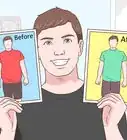This article was co-authored by Pouya Shafipour, MD, MS. Dr. Pouya Shafipour is a Family Medicine Specialist, Primary Care Physician, and a Weight Loss Specialist based in Santa Monica, California. Dr. Shafipour specializes in dietary, nutritional, behavioral, and exercise counseling to manage obesity and medical conditions related to excessive weight gain or loss. Dr. Shafipour received a BS in Molecular and Cell Biology from the University of California, Berkeley, an MS in Physiology and Biophysics from Georgetown University, and an MD from the Loma Linda University School of Medicine. He completed his internship in general surgery at UC Irvine and a residency in family medicine at the University of California, Los Angeles, and became board certified in family medicine in 2008.
There are 8 references cited in this article, which can be found at the bottom of the page.
wikiHow marks an article as reader-approved once it receives enough positive feedback. This article received 52 testimonials and 89% of readers who voted found it helpful, earning it our reader-approved status.
This article has been viewed 4,353,207 times.
Most teens feel self-conscious about their bodies, especially if you can afford to shed a few pounds. The secret to losing weight quickly and safely is not really a secret; you just have to eat fewer calories than you burn each day and do consistent exercise, even if it's just a brisk walk. These aren't hard things to do on their own, but they are hard to do consistently. Whenever you get discouraged, remember that millions of people just like you have been in this position. Stay in it for the long haul and you'll eventually lose the weight you want to.
Steps
Changing Your Diet
-
1Start with your diet. If you want quick results, you'll probably need to change your eating habits to reflect a healthier diet. However, this does not mean that you should starve yourself. Starving yourself causes your metabolism—the process by which your body burns fat—to slow down dramatically so that it can store up energy. You won't lose weight, and you might even gain it.[1]
- It is important to remember that your body is changing as a result of hormone fluctuations. It is natural to experience some weight fluctuation as well. It is best to follow a consistent, healthy diet every day to ensure that your body can ride the hormonal wave.[2]
- Work to maintain a health-based mindset to avoid developing an eating disorder. Anorexia and bulimia are very serious conditions that need treatment. If you think you might have an eating disorder, tell someone you trust and seek help immediately. No amount of weight loss is worth jeopardizing your health.[3]
-
2Understand the food pyramid. Knowing how many servings of different types of food you should eat in a day is essential for healthy weight loss. Try to eat and drink the following:
- A glass of water at meals. This is a healthier choice than sugary soft drinks and artificial juice. Try adding a few slices of lemon to your water. It will get rid of the toxins in your body. Drink as much water as you can, as often as you can.
- A minimum of 3 servings of fruit daily.
- A minimum of 4 servings of vegetables daily
- 3 – 7 servings of protein: (meat, fish, etc.) and dairy (milk, cheese, yogurt, etc.) daily
- 3 – 5 servings of healthy fats[4] : (nuts, peanut butter, avocado, etc.) daily
- Eat simple carbohydrates (refined and processed products including muffins, cakes, cereals, white bread, white pasta) sparingly. Eating carbohydrates from artificial sugars and refined carbs will leave you bloated. Choose complex carbohydrates such as whole grains, sweet potatoes, yams, whole rice, quinoa, and couscous instead.
Advertisement -
3Make menus for yourself. Know what foods you need not to eat and make healthy menus for yourself. Here are some suggestions on what you should eat.
- Breakfast Ideas: Toast with your favorite spread. Bananas are high in potassium. Try cereal with skimmed milk and fruit.
- Lunch Ideas: It's best to bring your lunch from home. School food can be unhealthy, and you probably don't have much choice over what there is to eat. Try a sandwich on wholegrain/whole wheat/multi-grain bread with lean chicken, ham, or a butter-fried egg (using butter to fry egg instead of oil). Don't use white bread – it's made from bleached flour, and it contains very few nutrients. Add a salad with veggies (tomato, cucumber, lettuce, etc); a glass of milk; and veggie snacks like carrot sticks and celery.
- Snack Ideas: veggies and fruit; natural yogurt and berries; a handful of nuts; veggies (like carrots, beans, snow peas) and low-fat dip. Do not buy yogurt-coated or chocolate-coated raisins or nuts. Most of these are full of added sugar.[5]
- Dinner Ideas: One idea is: 1/2 veggies, 1/4 protein, 1/4 carbohydrates. If your parents make fatty foods for dinner, only have a little, then make yourself a salad on the side. If you're cooking for yourself: make brown rice (eating more lean meat than part carbohydrates helps); scrambled eggs; make yourself a sandwich; or eat some fish (it's high in omega-3, which is good for your brain).
-
4Follow the basic rules of healthy eating. Eat three meals a day and two snacks in between. For each meal, make the veggies the largest portion, then the protein, then the carbohydrates.[6] Feel free to include dairy with any meal.
- Breakfast: Carbohydrates, fruit, protein
- Lunch: Veggies, protein
- Dinner: Protein, veggies, carbohydrates
- Snacks: Fruit, veggies, protein
-
5Drink lots of water. Try to refrain from drinking anything but water and unsweetened tea. Water is the best liquid for keeping you hydrated; it helps your body burn fat; and it may even help keep your skin clear and zit-free!
- As an added bonus: drinking only water means that you won't drink any sugar-water or energy drinks, which can contain up to 800 calories per drink. Just think: almost half your daily calories in one drink! Water is healthy, it tastes good, and it's an essential part of keeping you trim.
- If you find yourself consistently hungry after every meal: try drinking a big glass of water or green tea (unsweetened) before you eat. It'll help fill you up, and it doesn't contain any extra calories.
- To burn more calories, drink ice-cold water. Your body will spend more energy warming it up. A glass of cold water also feels refreshing after lots of exercise.
-
6Eat everything in moderation. Consider toning down your consumption, but not cutting anything out completely. Eat things like red meats once a week or once a month – you'll enjoy them more anyway!
- As exceptions: try to cut out fast food, sweets (chocolate, candy, chips, soda, etc.), and other junk food (soft drinks, burgers, ice cream, etc.) Avoid the strategy of allowing yourself one "cheat day" per week , as this can lead to one day of binging. Try setting one day each week when you can have a small treat after dinner. If this is too difficult for you, then start with a small treat after dinner every day, and slowly switch to one day. Although you can have it at any time of the day, it's better to have it after dinner because you can look forward to it all day.
- Fast food and sweets are highly processed, fatty, and unhealthy. McDonald's soft serves are made from pig fat, KFC fries are fried in lard, and thick-shakes contain almost no natural ingredients! It's all preservatives and additives. Know what is good for you and what isn't.
Maintaining Balance
-
1Don't cut out carbs completely. You want to limit the amount of carbs you eat, but don't completely remove them your diet. Try to eat high-carb foods with about 50% of your meals. Your body runs on glucose (carbohydrates) in order to function. Carbohydrates translate into energy. Unless you want to become lethargic, fatigued, and eventually gain more weight back, don't cut out carbs.
- Cutting out carbs completely, especially during this stage of life, can slow brain function and hormone production.
- Don't fall into the trap of the low-carb Atkins diet. This diet recommends that you eat high-protein meats and fish that are high in saturated fat and cholesterol. Consuming too much animal protein (eggs, butter, chicken, fish, yogurt, milk, beef, lamb, pork, turkey etc.) have been linked to increased rates of heart disease and cancer.
-
2Eat plenty of plant-based foods. This might include fruits, vegetables, beans, legumes, and grains. Base your diet around staples like rice, oatmeal, couscous, quinoa, yellow potatoes, and sweet potatoes. It may sound bizarre to be consuming white rice and potatoes, but these foods do not make you fat. Eat until you are satisfied, but not until you are stuffed. Do not restrict or starve yourself.
-
3Do not go on a low-calorie diet. These diet fads contribute to eating disorders and weight gain. As a teen, you are still growing. You need the calorie intake that's appropriate for your age/height/weight. For example, an active young woman should aim for no fewer than 2,000 calories a day.[7]
- These low-calorie 1,000 to 1,400 calorie diet plans are often three-day, seven-day, 10-day, or two-week plans – because they do not work long-term. You want weight loss that is maintainable, not just a quick fix.
- Under strict doctor supervision and recommendation, inquire about how many calories you should be consuming for healthy steady weight loss for your weight, height, age, gender, and activity level.
-
4Balance fats, carbohydrates, and protein. If you eat too much protein, your body turns the excess protein into glucose, which is what you were trying to avoid in carbs in the first place. On the other hand, fats have no effect on blood sugar and insulin levels.[8]
- Limit the amount of fat that you eat to between 35 and 60 grams per day. This means that fats should make up 20% to 35% of your entire calorie intake for the day.
- Each day, aim to eat about 200 to 350 grams (7 to 10 oz) of complex carbohydrates: whole grains, vegetables, and fruits. This should make up 60% to 70% of your entire calorie intake for the day.
- Aim to eat about 55 to 95 grams (2 to 3 oz) of low-fat protein, which includes beans, legumes, nuts and seeds. This should account for about 15% to 25% of your total calorie intake for the day. Did you know that 1 cup of oatmeal contains 12 grams of protein? Think outside the box, and don't just assume that meat, eggs, and fish are the only ways to get protein.
Exercising
-
1Work exercise into your lifestyle. It shouldn't be a chore! Little changes make a big difference, and will keep the weight from coming back. Starting a healthy exercise plan now will last long into your adult years. Walk, jog or cycle to school instead of driving. Run with your dog. Do crunches during commercial breaks on TV. Cycle with friends and family.[9]
- Plan your week. Set three days where you do intense exercise like running or a spin class at the gym. The other three days, do low-intensity exercise like a long walk. The other day is your day off.
- Don't spend your days sitting on the couch watching TV. Try exercising! Fast weight loss will only be achieved with diet and exercise.
-
2Make your exercises last. One exercise session should last at least 30 minutes to an hour. You should burn around 400 calories in a high-intensity workout session. If you aren't sweating while doing a high-intensity workout, you're not working hard enough. You're working hard enough if you're sweating profusely, out of breath, and thirsty.
- Stretch! Be sure to stretch before and after you exercise. Stretching also helps your growing muscles not to bunch up so you might look like a weightlifter. If you did stretch right, it would have an effect of a ballerina.
- It's hard to lose weight when you're injured. However, stretching and yoga might help.
- Do some weight training. Muscles burn calories by just being there. The more muscles you have, the faster you'll lose weight.
-
3Invest in sports or hobbies that burn calories. Sports are great because they tap into our competitive energy, getting us to dig deeper than we normally might have. Don't worry about what people say, or whether you're "skilled" enough to join a team; just find a group of girls doing something that you're interested in, and ask if you can join. Here are some activities that are big-time calorie busters:
- Spinning/elliptical trainer: Spinning or using the elliptical burns the most calories for the average U.S. woman, who weighs 163 pounds. The average female burns 841 calories per hour spinning or doing the elliptical.
- Downhill skiing: Downhill skiing is another great way to burn tons of calories. Some consider it more fun than spinning. However, it may only be a viable regular workout if you are in a snowy, mountainous area. The average female burns 645 – 841 calories each out while downhill skiing.
- Full-court basketball: Basketball requires good hand-eye coordination and the ability to run up and down the court. The average female playing basketball blasts around 812 calories an hour.
- Competitive soccer: Soccer players are known for being among the most fit athletes in the world. No wonder: You're running up and down a really long field! Female soccer players burn 742 calories of grit and determination per hour.
-
4Try yoga or Pilates. Even if you don't want to do a super-rigorous sport, this doesn't mean that you have no other options. Lots of girls and women prefer to do lower-intensity workouts such as yoga or pilates. Both are good for calorie-busting, and leave you feeling refreshed and energized.
- Yoga is a series of stretching exercises that originated in ancient India. There are different kinds of yoga, each burning a different amount of calories:
- Hatha Yoga, where the student goes through a series of gentle exercises focusing on posture and breathing, can burn about 175 calories per hour in an average female.[10]
- Vinyasa Yoga, in which poses are tougher and linked together faster, can burn about 445 calories per hour in an average female.
- Bikram Yoga, where the room in which the yoga takes place is heated up to 105 degrees, burns about 635 calories in the average female.
- Pilates is a stretching and body conditioning routine that works the core. It was designed by a German in the early 20th century, and it boasts over 10 million practitioners today. Pilates (for beginners) burns around 200 calories per hour, and you will burn more as you advance in difficulty.
- Yoga is a series of stretching exercises that originated in ancient India. There are different kinds of yoga, each burning a different amount of calories:
Sleeping Well
-
1Make sure that you get enough sleep. Try to get eight to ten hours each night.[11] If you're still tired, try supplementing with five- to 45-minute naps in the day. This can make a huge difference in losing weight.
- This is a critical issue, especially in teens due to their school schedules. Get adequate sleep each night so your body can rest, repair, and produce the hormones needed to keep weight at a healthy level.
-
2Avoid alarms. If possible, try to go to sleep early enough that you don't need to wake up with an alarm. Alarms can disrupt your sleep in the midst of a REM cycle, making you wake groggily. It's always best to wake up slowly, peacefully, and at your own time. If you are aware of how much time you usually sleep, you should go to bed early to fill in those hours.
- Waking up suddenly disrupts the whole fat-burning cycle and instead leads to fat production.
-
3Keep a glass of water beside your bed. It is common to wake up due to thirst. The body needs the water's energy to burn even more fat!
-
4Sleep straight and take deep breaths. Sleeping on either sides of the body makes it hard for blood to run around which also helps in weight loss. When you are lying straight on the bed before sleeping, take deep, long breaths and hold them for as long as you can. Breathe slow and easy. This should act as a command for the body to help you fall asleep and start flushing down fats.
Sample Diet
Lose Weight the Right Way with this Expert Series
Expert Q&A
-
QuestionHow can a 15 year old lose weight fast?
 Lyssandra GuerraLyssandra Guerra is a Certified Nutrition & Wellness Consultant and the Founder of Native Palms Nutrition based in Oakland, California. She has over five years of nutrition coaching experience and specializes in providing support to overcome digestive issues, food sensitivities, sugar cravings, and other related dilemmas. She received her holistic nutrition certification from the Bauman College: Holistic Nutrition and Culinary Arts in 2014.
Lyssandra GuerraLyssandra Guerra is a Certified Nutrition & Wellness Consultant and the Founder of Native Palms Nutrition based in Oakland, California. She has over five years of nutrition coaching experience and specializes in providing support to overcome digestive issues, food sensitivities, sugar cravings, and other related dilemmas. She received her holistic nutrition certification from the Bauman College: Holistic Nutrition and Culinary Arts in 2014.
Certified Nutrition & Wellness Consultant First, it's important to recognize that your body is going through changes when you're 15 and you shouldn't put too much effort into losing weight quickly. It's much better to focus on eating healthy, balanced meals and getting plenty of exercise. If you continue leading a healthy lifestyle and you eat a balanced diet, you'll maintain a healthy weight over time.
First, it's important to recognize that your body is going through changes when you're 15 and you shouldn't put too much effort into losing weight quickly. It's much better to focus on eating healthy, balanced meals and getting plenty of exercise. If you continue leading a healthy lifestyle and you eat a balanced diet, you'll maintain a healthy weight over time. -
QuestionHow many weeks should it take for me to lose 15 pounds?
 Kristi MajorKristi Major is an ACE (American Council on Exercise) certified Personal Trainer based in the San Francisco Bay Area. Kristi has over 18 years of personal training experience and more than 90 hours of recertification study in fitness, health, nutrition, and supplementation. She is CPR and AED certified from the American Heart Association and she has a BA in Television Broadcasting.
Kristi MajorKristi Major is an ACE (American Council on Exercise) certified Personal Trainer based in the San Francisco Bay Area. Kristi has over 18 years of personal training experience and more than 90 hours of recertification study in fitness, health, nutrition, and supplementation. She is CPR and AED certified from the American Heart Association and she has a BA in Television Broadcasting.
ACE Certified Personal Trainer You should only aim to lose 1–2 pounds per week to stay healthy, so it will take at least 2 months of work.
You should only aim to lose 1–2 pounds per week to stay healthy, so it will take at least 2 months of work.
Warnings
- Never under any circumstances should you "purge" to compensate for eating. This includes force vomiting, taking laxatives or diuretics, or excessively exercising. If you find yourself doing this or compelled to do it, seek medical care immediately.⧼thumbs_response⧽
- Know what is considered a normal weight for you. If you are not overweight, don't try to lose weight just so you can look like other people. It's not a bad thing if you don't look very skinny. Being too skinny can be unsafe and harmful to your body.⧼thumbs_response⧽
- Weight is not just body fat; it's also muscle. Starving yourself will weaken your muscles and dangerously weaken your metabolism, which can make you even unhealthier. Starvation means you would put on a lot of weight very easily when you start eating normally for maintenance. When your metabolism is lowered, your body goes into "panic mode" and defends itself by putting on weight at every opportunity. This may permanently mess up your metabolism.⧼thumbs_response⧽
- Consult a doctor before starting a diet. A doctor can help you to choose the appropriate diet for your situation.⧼thumbs_response⧽
- If you are seriously overweight, consider seeing a doctor. This "lifestyle plan" is only recommended for girls who want to lose 10 – 15 pounds.⧼thumbs_response⧽
- Avoid fad diets like juice cleanses, meal replacement shakes, etc. These are likely not suitable for you while you are still growing.⧼thumbs_response⧽
- Don't over-restrict calories. Cutting out around 200 a day is fine, but you don't want to eat any less than 1,200 calories per day.⧼thumbs_response⧽
- Puberty causes many girls to gain weight. This is perfectly normal. Don't expect to look like a 12 year old when you're 15. Curves are a beautiful thing.⧼thumbs_response⧽
References
- ↑ Pouya Shafipour, MD, MS. Board Certified Family Medicine Specialist. Expert Interview. 24 April 2020.
- ↑ Pouya Shafipour, MD, MS. Board Certified Family Medicine Specialist. Expert Interview. 24 April 2020.
- ↑ Pouya Shafipour, MD, MS. Board Certified Family Medicine Specialist. Expert Interview. 24 April 2020.
- ↑ http://kidshealth.org/kid/nutrition/food/fat.html#cat20015
- ↑ http://www.bbc.co.uk/news/health-32914999
- ↑ Lyssandra Guerra. Certified Nutrition & Wellness Consultant. Expert Interview. 25 March 2020.
- ↑ Pouya Shafipour, MD, MS. Board Certified Family Medicine Specialist. Expert Interview. 24 April 2020.
- ↑ Lyssandra Guerra. Certified Nutrition & Wellness Consultant. Expert Interview. 25 March 2020.
- ↑ Pouya Shafipour, MD, MS. Board Certified Family Medicine Specialist. Expert Interview. 24 April 2020.
About This Article
If you’re a teen girl who wants to lose weight quickly and safely, focus on eating a healthy diet and getting some exercise every day. Start by learning how many servings you should eat from each food group to help guide your weight loss. For example, try to eat at least 3 servings of fruit and 4 servings of vegetables a day. You can use this information to make menus for yourself, including ideas for all 3 meals, plus 2 snacks. In addition to eating a healthy, well-rounded diet, aim to exercise 5 days a week for 30 to 60 minutes at a time. Perform a mix of cardio, like running, biking, and hiking, and strength training, like weights, pilates, and yoga, to burn calories while adding lean muscle to your body. To learn how sleep can help you lose weight, keep reading!
-Step-1-Version-4.webp)

-Step-2-Version-3.webp)
-Step-3-Version-4.webp)
-Step-4-Version-3.webp)

-Step-5-Version-4.webp)
-Step-6-Version-3.webp)
-Step-7-Version-4.webp)
-Step-8-Version-3.webp)
-Step-9-Version-4.webp)
-Step-10-Version-4.webp)
-Step-11-Version-3.webp)
-Step-12-Version-4.webp)
-Step-13-Version-3.webp)
-Step-14.webp)
-Step-15.webp)
-Step-16.webp)
-Step-17.webp)
-Step-18.webp)



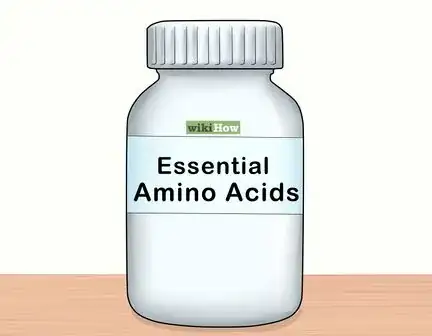
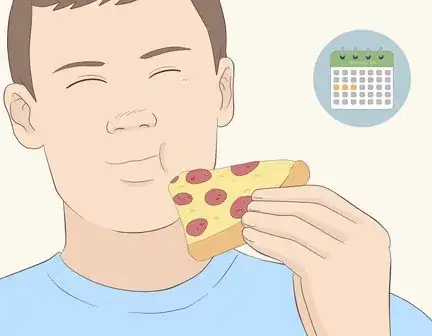


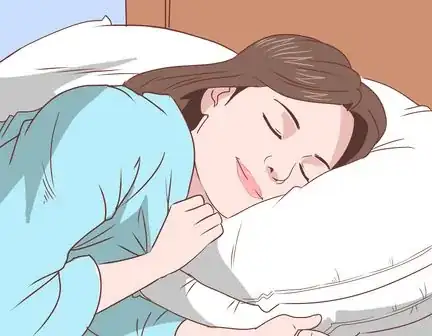
-Step-12.webp)
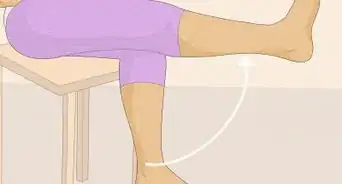
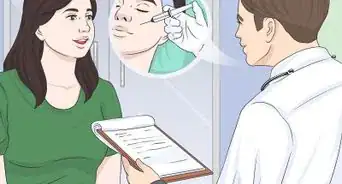
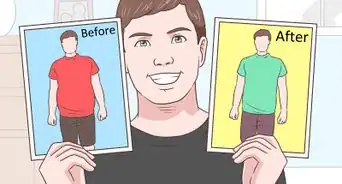
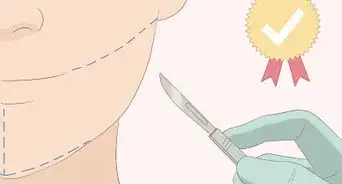
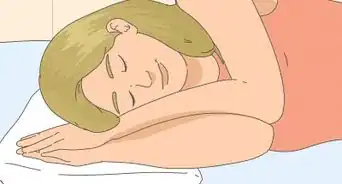
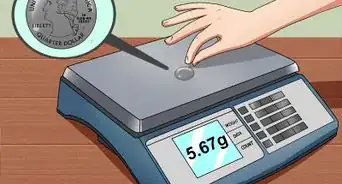
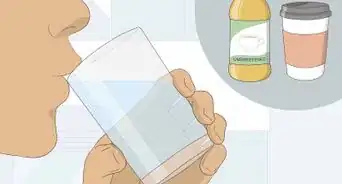

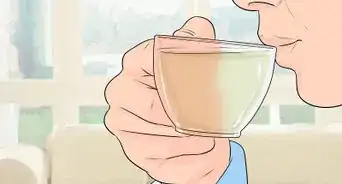
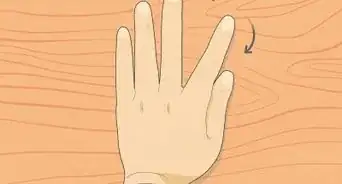

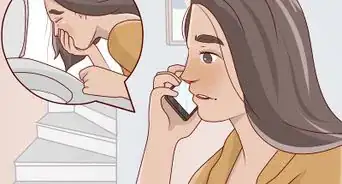
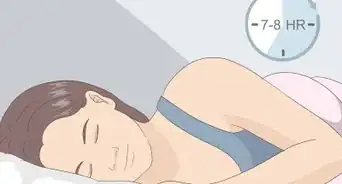










-Step-12.webp)


